We often get asked, what is the best way for hair loss treatment? And, you probably have searched on Google or asked your friends and family about how to cure hair loss. You may also have tried different methods to prevent and cure hair loss, but without much success.
While it’s normal to worry about your hair fall, the best way is to know more about it and find the best cure suitable for you. But, you probably get lost in thousands of articles and advice lying around. Today, we will help you break through the clutter and understand what hair loss is, why hair loss occurs, how to prevent hair loss, and how to effectively treat hair loss.
Understanding Hair Loss:
Your Bathroom Sink is clogged with hair, your bedsheets are covered in hair, your scalp is being exposed, and every time you slide your hand across the hair, you find multiple strands. Sounds Familiar?
Well, you are not the only one. Globally, 7 out of 10 people suffer from some form of hair loss.
Hair loss can affect any part of your body, but whenever we think of balding, it refers to excessive hair loss from the scalp.
An average adult head has about 100,000 - 150,000 hairs, which are in different phases: growing, resting, or shedding. 90% of your hair is growing while the other 10 % of them are in the resting phase which eventually sheds down. Losing up to 100 hairs is considered normal. However, if you are losing a significant amount of hair and start to notice bald spots, then you probably need to be concerned.
The increase in hair loss per day may be due to the disruption in the hair cycle and damage to hair follicles which leads to more hair falling out than it is growing. Hair loss may be linked to a person’s genetics, although many medical and behavioral conditions may interrupt the growth cycle causing hair loss.
Alopecia is the medical term used to define hair loss problems and the most common form of hair loss is Androgenetic Alopecia, which originates from Genetics, which is also often referred to as “pattern hair loss” or “pattern baldness” since they follow a specific pattern of shedding. This is the most common form of hair loss, while there are others as well.
How to Know You are losing excessive Hair? The Symptoms of Hair loss:
Hair loss may be gradual or abrupt and can affect just your scalp or the whole body. So, how to recognize hair loss. Here are a few symptoms that you need to look out to.
Gradual thinning of Hair Loss: This is a common form of hair loss which is seen gradually as people age. The male hair loss is visible mostly in the hairline and crown while females usually lose their hair from their partitions.
Bald Spots: Some people suddenly lose their hair in circular or patchy spots over their head, beard or eyebrows. Itch and Pain are commonly experienced before the hair actually falls out.
Loosening of Hair: In cases of physical or emotional shock, your hair may start to loosen and handfuls of hair may be visible while combing, washing, or simple tugging. This is generally temporary but can cause overall hair thinning.
Full-body hair loss: If you are suffering from certain medical conditions or doing treatments such as chemotherapy, you may suddenly lose your hair all over the body. This type of hair loss is also temporary and the hair grows back in most cases.
If you are experiencing these symptoms or simply worried about your hair loss, you should consult with a doctor.
Your doctor may ask the following questions:
When did you first begin experiencing hair loss?
Has your hair loss been continuous or occasional?
Have you noticed poor hair growth, hair breakage, or hair shedding?
Has your hair loss been patchy or overall?
Have you had a similar problem in the past?
Has anyone in your immediate family experienced hair loss?
What medications or supplements do you take regularly?
What, if anything, seems to improve or worsen your hair loss?
These questions are asked to understand the underlying reasons your hair falls before your doctor refers to suitable treatment.
Normal Causes of Hair Loss:
There are many causes of hair loss and if you consult with a doctor you can properly identify the root cause of your hair loss.
In this blog, we will help you understand the major causes of hair loss under two major categories: Scarring Alopecia and Non-Scarring Alopecia.
Scarring Alopecia or Cicatricial Alopecia:
Characterized by permanent damage of hair roots and adjacent skin, this type of hair loss is permanent with no chance of the hair growing back. The major causes of Scarring Alopecia include:
However, Scarring Alopecia is very uncommon and can be treated with a hair transplant.
Non-Scarring Alopecia:
This is the normal form of hair loss where no damage is done to the scalp with chances of hair regrowing. The two common causes of Non-Scarring Alopecia include Heredity and Autoimmune Diseases. However, Non-Scarring Alopecia can be caused by:
Heredity(Androgenic Alopecia): Known as Androgenic Alopecia, this type of hair loss is common iIf you have a family history of baldness. It usually occurs gradually and in predictable patterns, and can be triggered by hormonal imbalance, as early as puberty.
Autoimmune Disease(Alopecia Areta):Alopecia Areta is an autoimmune disease, usually characterized by circular or oval patches, and occurs when your own immune system starts to attack and destroy your hair follicles.
Stress inducing Hormonal Changes(Telogen Effluvium): Not the general stress we have on a daily basis, but events and medical conditions such as pregnancy, child delivery, thyroid disorders, nutritional deficiencies, emotional problem, accidents, etc may trigger abrupt hair fall, which usually stops after removal of the stressor/trigger.
Tight Hairstyles (Traction Alopecia): Yes, you may experience hair fall, if you wear tight hairstyles such as ponytails, braids, or pigtails. As your hair is constantly pulled, the hair follicles start to weaken and eventually are damaged. People usually experience the receding of hairline or loss of hair in tight areas.
Disorders (Trichotillomania): A form of temporary psychiatric disorder, these patients have an irresistible desire to pull out their hair, from the central scalp or even eyebrows or mustaches.
Other causes of hair loss may be the use of abrasive hair products, constant hot-oil hair treatments, poor diet.
Hair Loss Treatment
How do I Cure My Hair Loss? How to Stop Hair Loss? How to prevent Hair Loss? Or, What to do for Hair Loss Treatment?
These are some of the common questions we encounter.
Now that you know what hair loss is and what causes it, let us explore the wide varieties of hair loss treatment available. However, it is always best to consult with a doctor and know the root cause of your hair loss.
But, before we dive into hair loss treatment in-depth, here are few tips to prevent hair loss:
Prevention of Hair Loss:
Treat Your Hair Gently. Use a wide-toothed comb and avoid tugging, brushing, or combing your hair when it’s wet. Don’t be harsh on your tangled hairs.
Don’t touch your scalp too often, and don’t touch it with dirty hands
Avoid too much shampooing and too less shampooing
Avoid harsh treatments, Avoid Tight Hairstyles. Blow Dryers, Heated Combs, Hair Straighteners, Coloring Products, and Bleaching Agents may also lead to hair loss. So avoid them when possible.
Eat a Balanced Diet that is high in iron and protein
Stop Smoking!
Look out for medications and supplements that might cause hair loss
Protect your hair from sunlight and other sources of ultraviolet light.
Hair loss, while being caused by so many factors as stated above, it can be prevented to some extent. However, this may not be always enough and you may eventually have to opt for its treatment.
Natural Treatment of Hair Loss: Hair Treatment at Home
The natural treatment of hair loss includes the things you can do easily at home or through products. While many of these treatments are not medically or scientifically approved, they have been effective for different people. And, it’s probably the reason why people share them right off the bat!
Herbal Supplements: Similarly, another natural treatment for hair loss includes supplements that can be included as part of your diet. Include Iron Rich foods like meat, fish, poultry, tofu, broccoli, and green vegetables on your diet. Similarly, Biotin (Vitamin B7) found in Eggs, Mushrooms, Pumpkin Seed Oil as well as amino acids found in fish, eggs, seeds and nuts, whole grains, meat, are known to manage your overall health and hair health.
Smart Hair Care: As discussed in the prevention of hair loss, small and easy changes to your hair care routine can help with hair loss treatment. Be gentle with your hair, when you wash, dry, or brush. Avoid tight hairstyles and limit the use of curling iron and hot rollers. Also, avoid abrasive hair products and routine. Also, be on the lookout for split ends!
Yoga, Meditation & Exercise: As hair loss is also associated with stress and unhealthy lifestyle, yoga, meditation or exercise can not only help you stay physically, mentally and emotionally healthy but also help in your overall hair health. So, if you have been waiting for a strong reason to stay active, then your hair is probably the right reason to do it.
Medication for Hair Loss Treatment:
While there are many medications available that claim to treat hair loss, there are only two medicines approved for Hair loss
Minoxidil: It is the only regrowth product approved by the US Food and Drug Administration (FDA) to treat hair loss, for both men and women. Minoxidil comes in the form of liquid, shop, or shampoo and is applied to the scalp. Minoxidil helps stop hair thinning and stimulate hair growth on top of the scalp. However, this does not work for everyone and you will have to use the medicine indefinitely to retain its benefits.
Oral Finasteride: Unlike Minoxidil Finasteride, which is not meant for consumption, Finasteride is an oral tablet which can be ingested and works to decrease the level of DHT, which is known to cause hair fall as well as prostate.
Medical Treatments & Therapies for Hair Loss:
PRP : Platelet-rich plasma (PRP) therapy is a medical treatment where a person;s blood is drawn, processed and then injected to the scalp as a therapy for hair loss. It is believed that PRP injections trigger natural hair growth and increase blood supply supply to the hair follicle increasing the overall hair density. PRP has been proven to be effective for treating Androgenic Alopecia and Alopecia Areta. However, PRP is not a permanent cure to hair loss and you would require multiple therapies (every 3 to 6 months) to maintain your overall hair growth.
LASER : LASER Therapy is considered a safe, tolerable and non invasive cure to hair loss, where a laser device irradiates photons into scalp tissues which is absorbed by weak follicles and stimulates hair growth. Low-dose laser treatments are believed to invigorate circulation and stimulation that encourages hair follicles to grow. However, laser therapy does not work for everyone and you would have to opt for a hair transplant for a more effective and permanent fix.
HAIR TRANSPLANT: A Permanent Solution to Hair Loss
Hair transplant refers to the extraction of hair shafts from hair rich areas(donor areas) like the back and side of the scalp and implanting them at the balding site (hairline & crown). Hair transplantation is based on the principle of “Donor Dominance”, which implies that transplanted hair will retain its original properties even when transferred from the donor area to the bald area.
Hair Transplantation is a permanent and perfect solution to balding and is effective for treating hair loss in both men and women. So, if you are worried about your hair, losing confidence, and fed up with everything you have tried, hair transplantation will give you the results you desire.
There are three main techniques of hair transplant, based on who the transplant is done. They are:
FUT:
Also known as the strip method, the follicular unit transplantation is the primitive technique of hair transplant where a strip of scalp skin containing hair is taken from the back of the scalp, cut under the microscope to individual grafts, and transferred to the bald area. The donor area from which the strip is taken is sutured, which creates a wound, that heals in a week or two. This technique is comparatively cheaper but is more painful, has a longer healing time, and has high chances of infections. Similarly, many grafts die during the process of mechanical handling of strips. Also, the limitation of FUT is the graft harvesting can only be done from the head.
FUE:
An improved form of FUT, Follicular Unit Extraction is also called “stitchless hair transplantation” as it leaves no visible scarring in the donor area. The difference between FUT and FUE is the method of extracting grafts. In FUE, each hair graft is removed from the donor region one by one using fine punches of caliber, which is then stored, and implanted into slits in the recipient area one by one. This method is relatively less painful, heals quicker, and has no visible scarring. Similarly, this method can be applied to harvest grafts from the beard, chest, and pubic area too. FUT is also relatively more expensive than FUE.
DHT:
Direct Hair Transplant is the most advanced Hair Transplantation technique which modifies FUT by creating the slits in the recipient area(balding area) first. The grafts are then harvested from the donor area and transplanted within 2 -20 mins ensuring almost 100% graft survival. Thus, DHT helps in achieving maximum hair density. Another major advantage of DHT is the reduced duration of the overall procedure. However, DHT requires a skilled team of professionals to carry out multiple steps simultaneously which makes the overall process more expensive and technically demanding.
Each of the techniques has its own advantages and disadvantages. FUT has been almost replaced by FUE and DHT, while DHT has evolved as the choice for the most sophisticated and result oriented. The cost, which is a major deciding factor, also varies accordingly with FUE being the cheapest and DHT being the most expensive. Similarly, the results and customer satisfaction also varies with DHT having the highest and FUE having the lowest.
At Folliderm, we specialize in Direct Hair Transplant and are the only clinic in Nepal providing DHT.
Hair Loss Treatment for Men vs Hair Loss Treatment for Women
WHenever, we think of hair loss, we imagine a balding guy with receding hairline and patchy scalp, but in reality upto 40% of women also suffer from hair loss. Hair loss is not gender biased and can exist in many forms.
Hair loss in men and hair loss in women are somewhat similar while also having their differences. The most common type of hair loss in both men and women is androgenetic alopecia, which is categorized as male pattern baldness and female pattern baldness. Men may show the signs of hair loss, as early as age of 20 while noticeable thinning of hair occurs in women around 40 years old or later. Similarly, the way hair falls is also different in men vs how the hair loss occurs in women.
Here, we will talk in detail about the cause of hair loss in men vs women as well as effective treatment for both.
Hair loss in Men:
The most common form of Hair loss in men, which affects nearly 90% of men is the Androgenetic Alopecia, where their inherited medical condition results in receding hairline and thinning crown. The major pattern of hair loss in men is visible in the crown, hair line and top of the head. The signs of hair loss in men occur as early as their teens while more intense hair loss begins in their forties, which carries on further as they age.
Hair Loss in Women:
Women can also experience as early as their twenties and thirties, while it is more common in women between the ages of forty to fifty. However, the hair loss in women is not visible in the form of receding hairline, rather, it occurs as widening of their partitions and in the middle areas. While genetics is one of the factors for hair loss in women, the hormonal changes after menopause, pregnancy and childbirth is also a major contributing factor for the hair loss in women.
The best way to treat hair loss in both men and women is through Hair Transplant, which is a permanent solution. Also, it is important to recognize the underlying condition first as some of the hair fall is temporary and does not require a hair transplant.
Hope this article was helpful for you to understand hair loss, its root causes as well as different ways to prevent and cure hair loss. If you still have other questions, feel free to mail us or contact us to book an appointment for a consultation with our doctors.

![Hair Loss Treatment: Cause and Solutions[Updated 2020] | Folliderm](/images/1179925350540844591414721493Hair Loss Treatments.jpg)


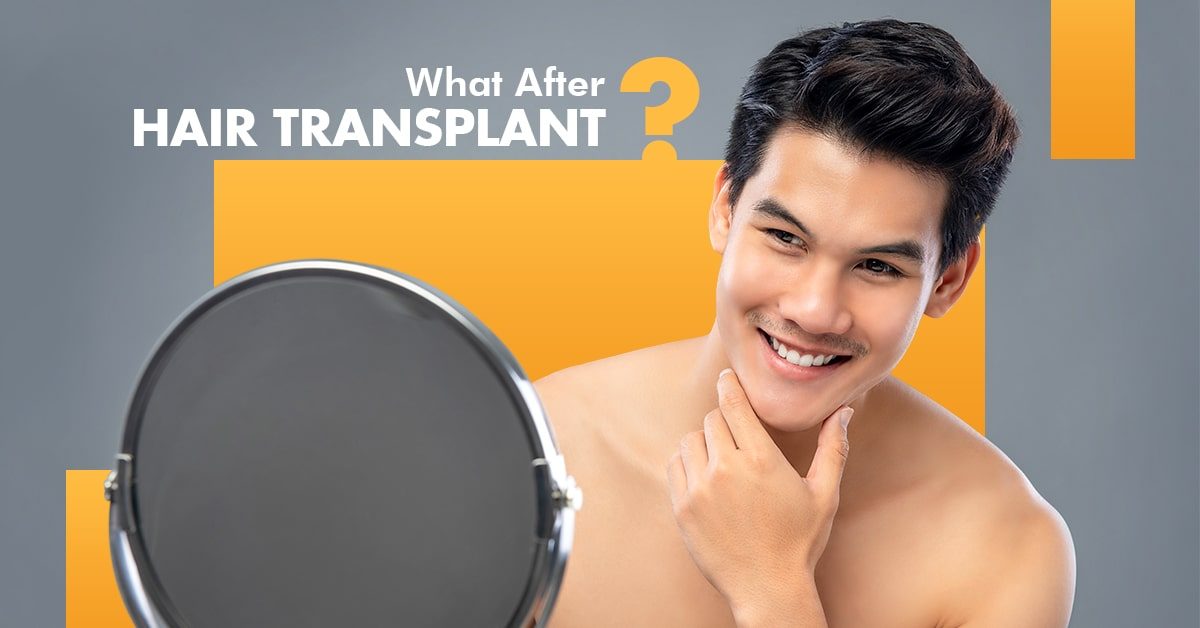


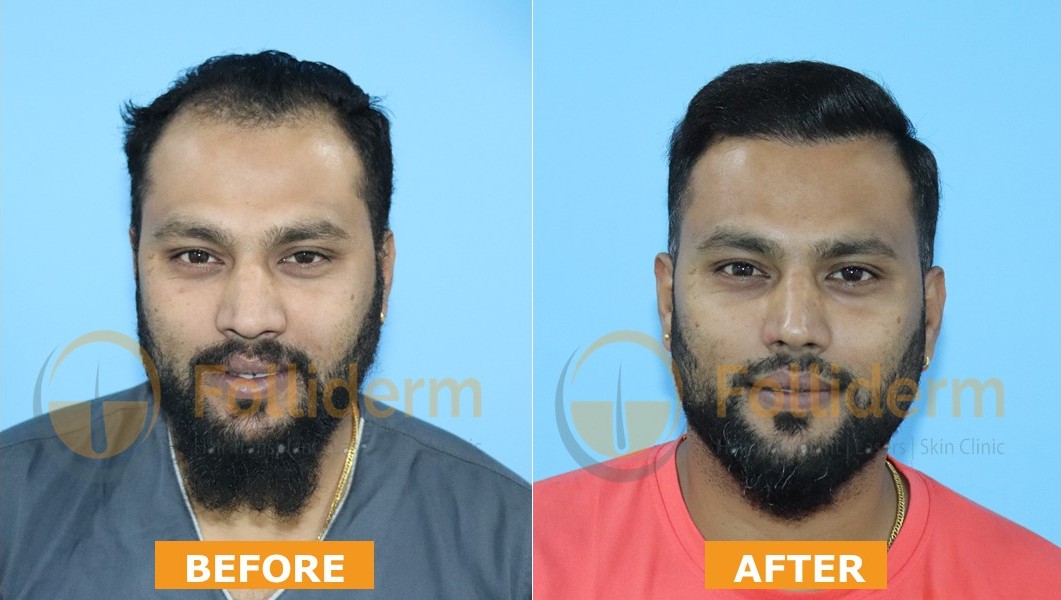
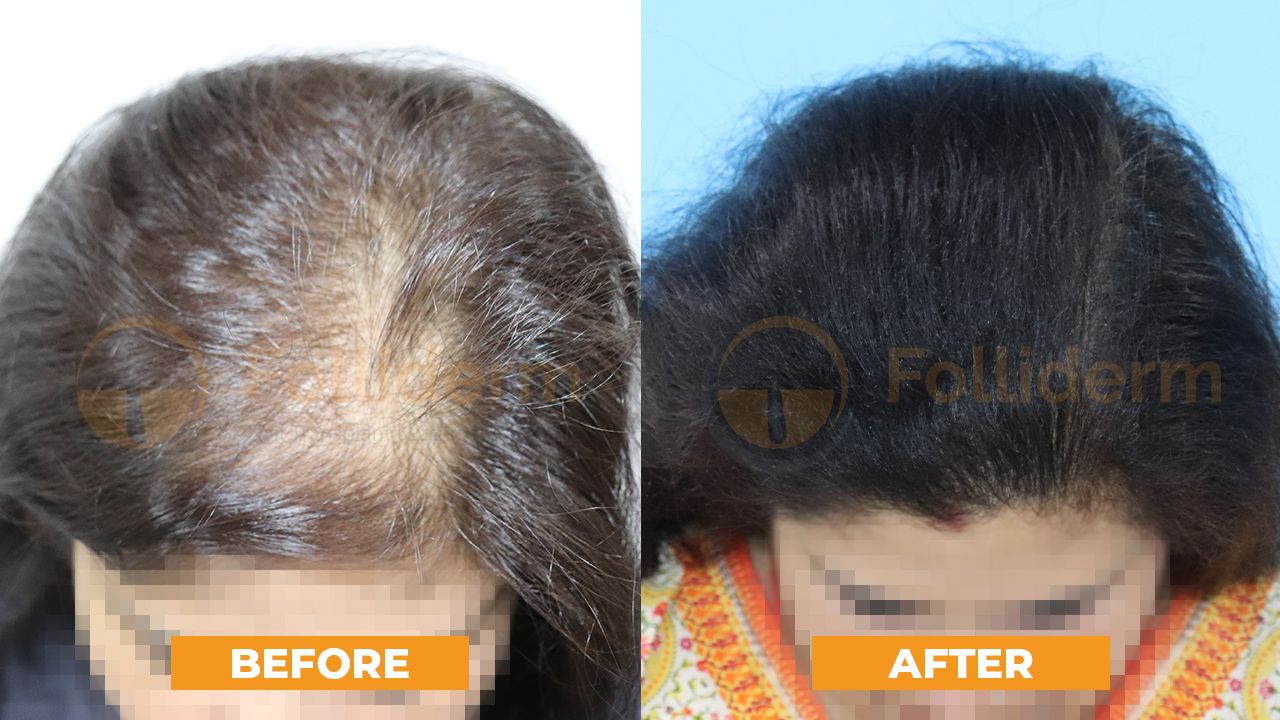
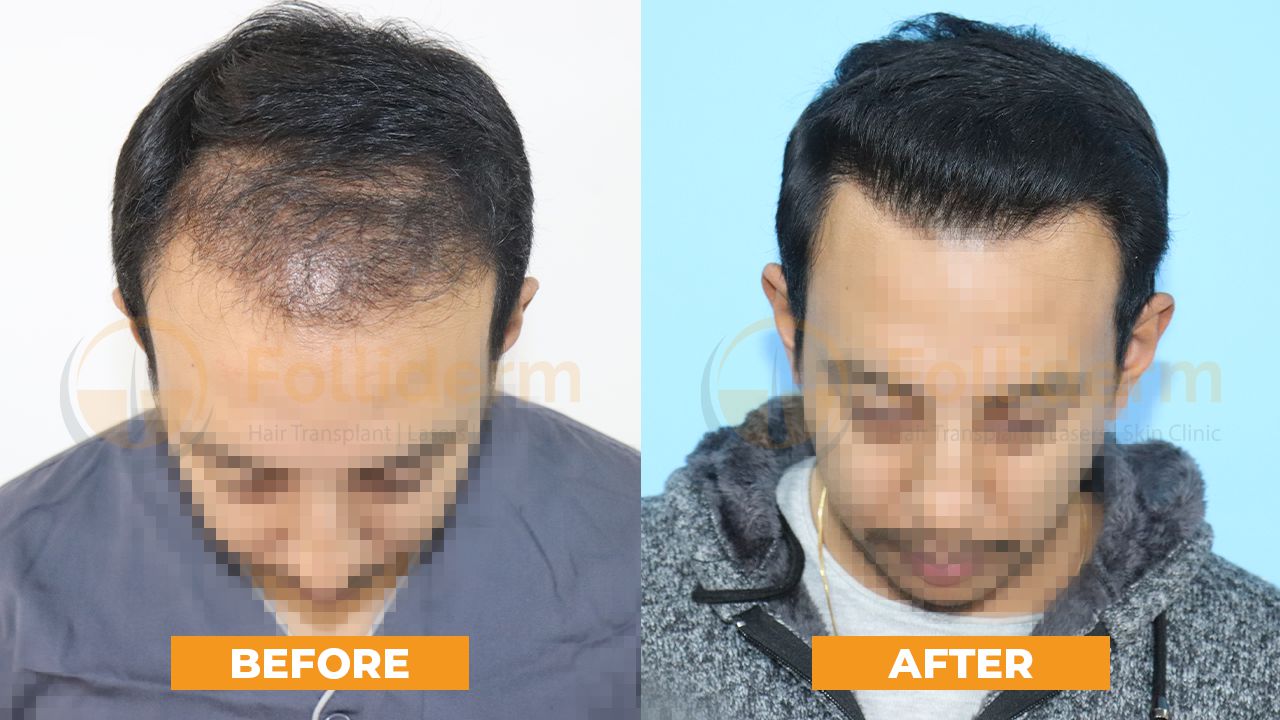
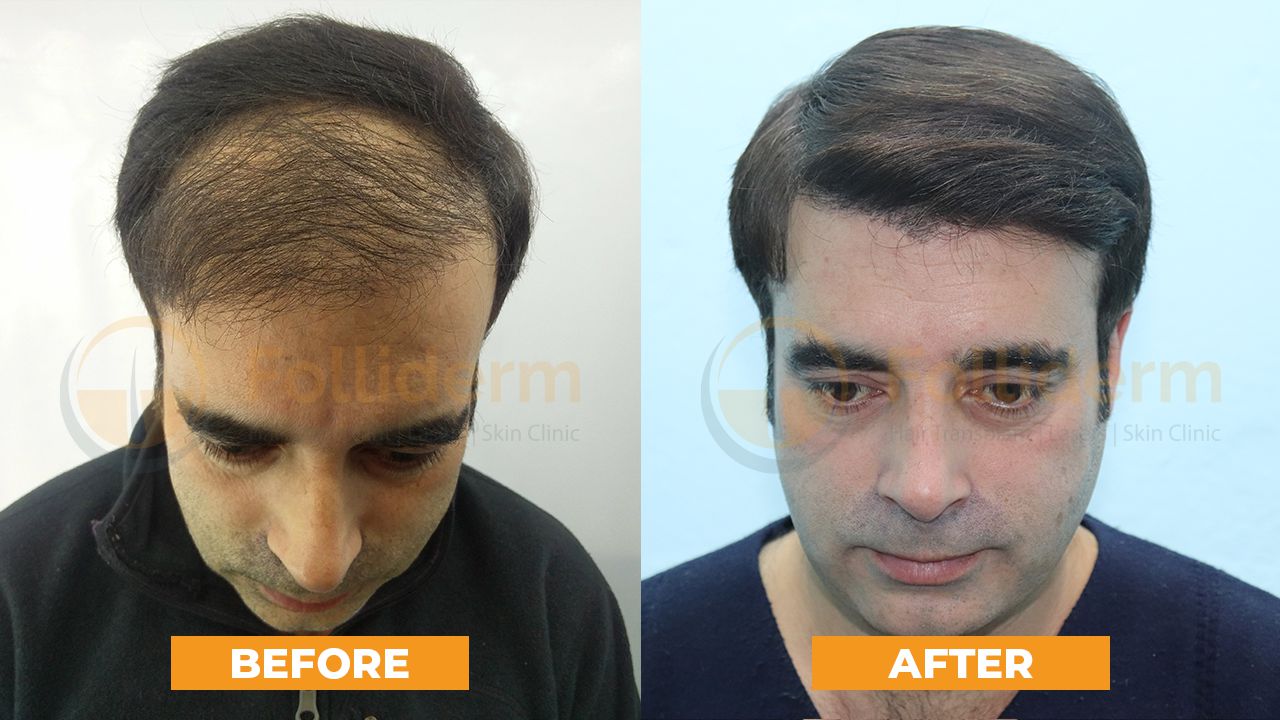
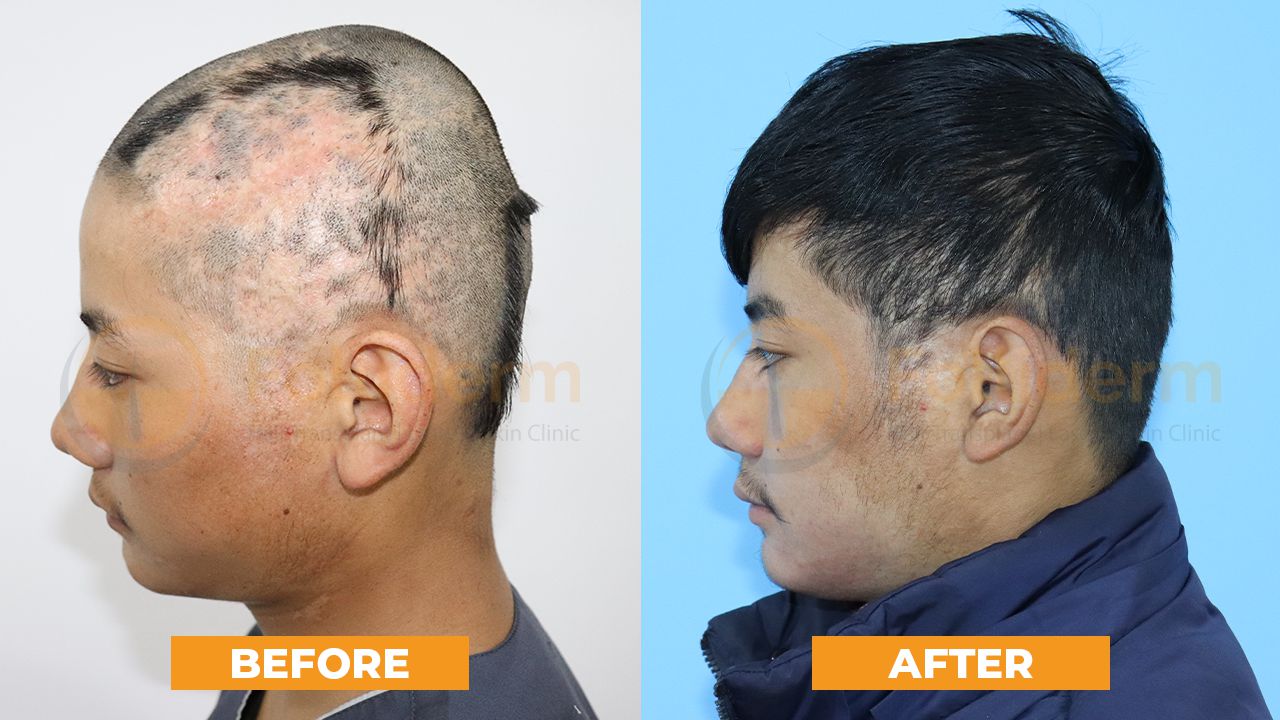
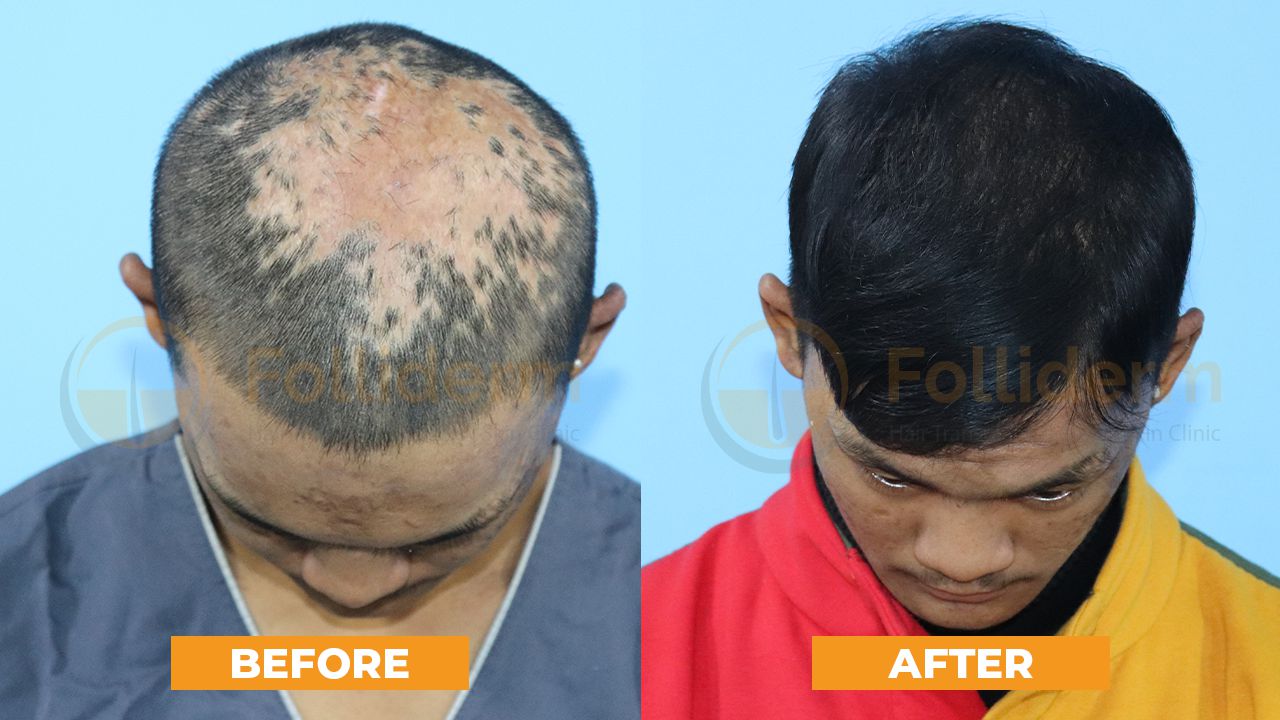
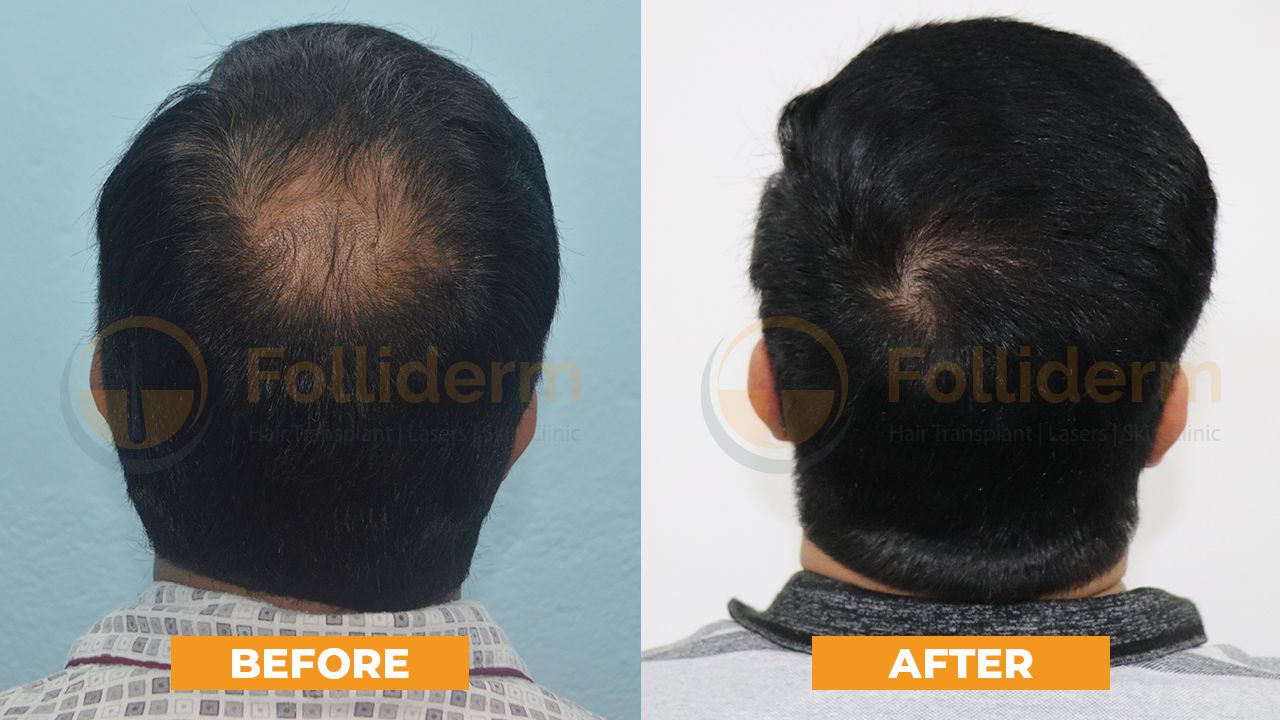
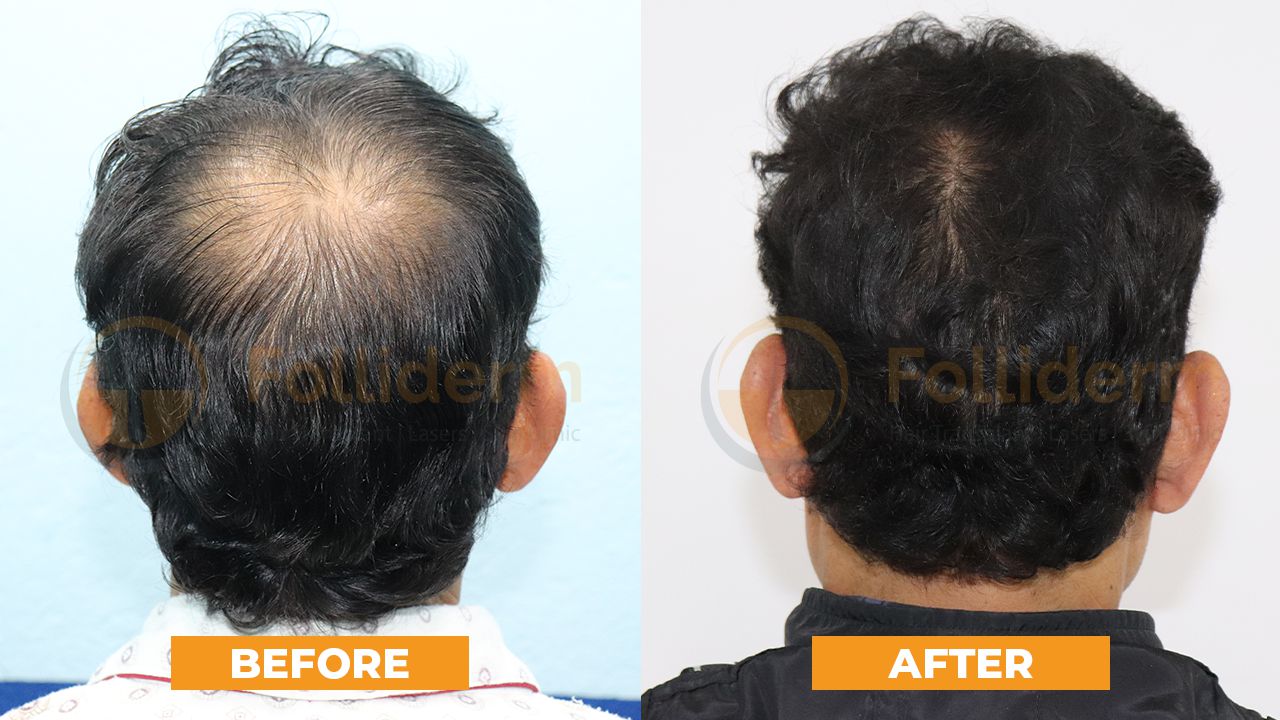
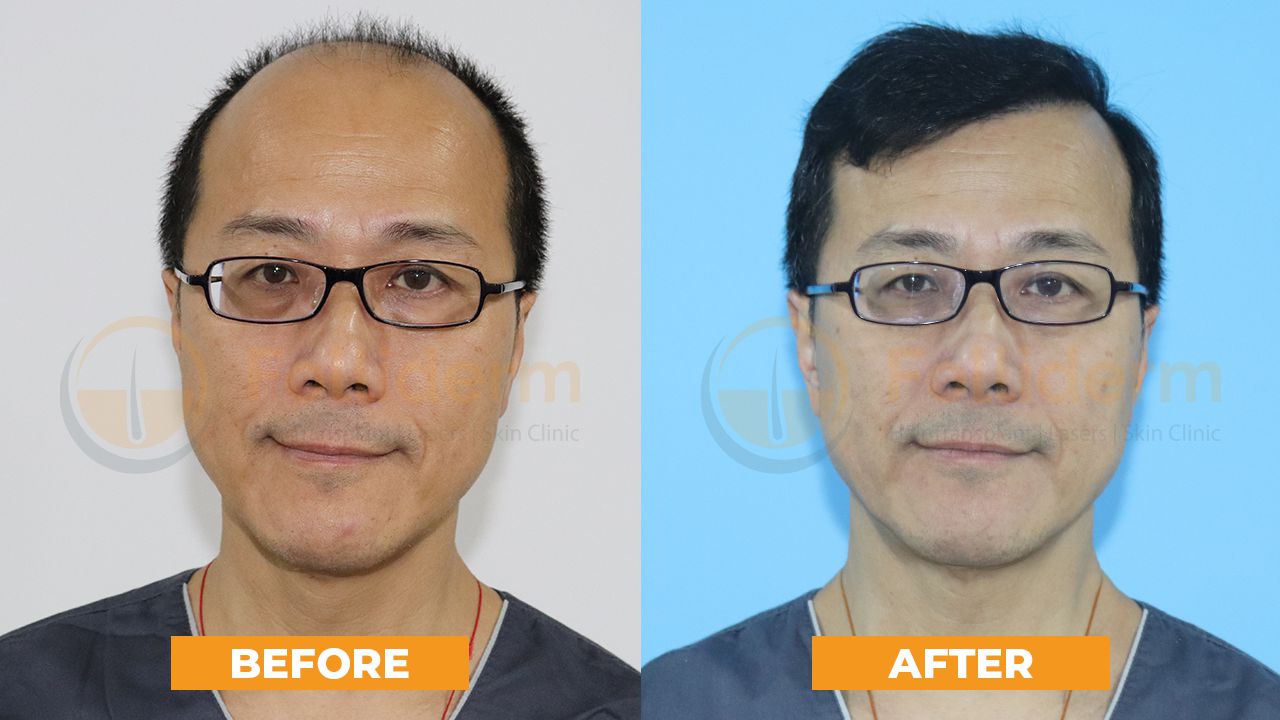
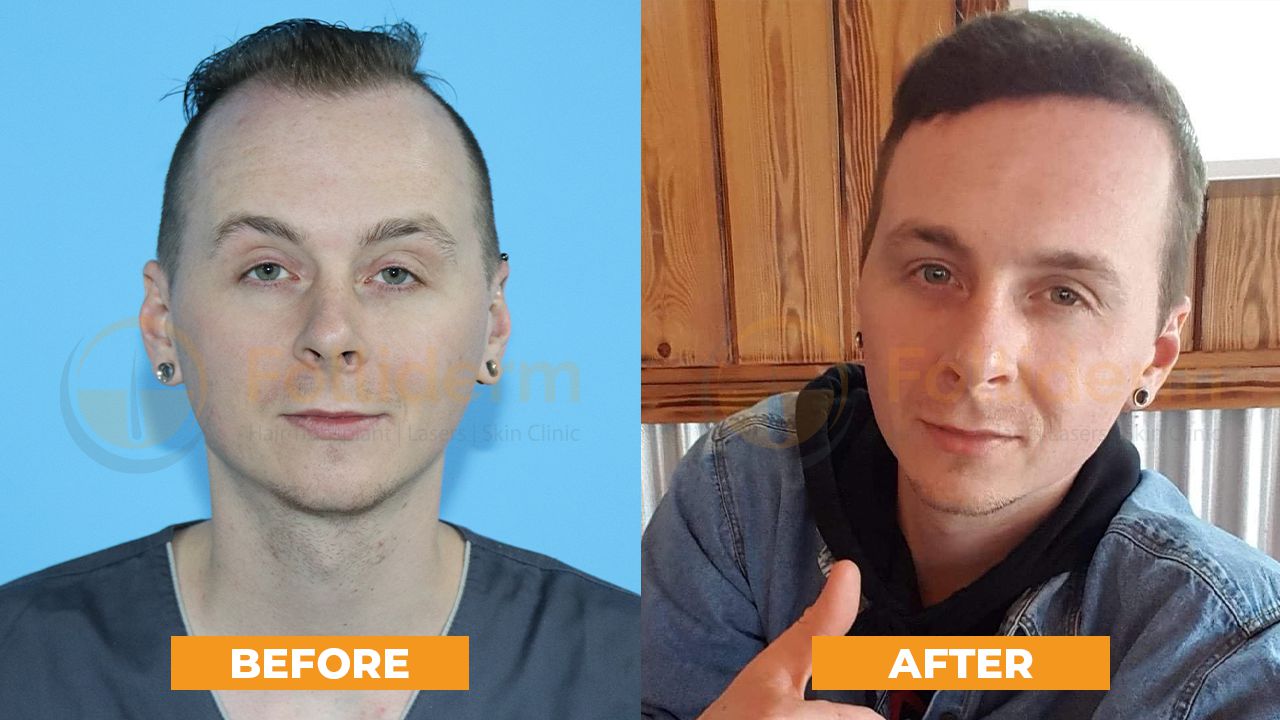
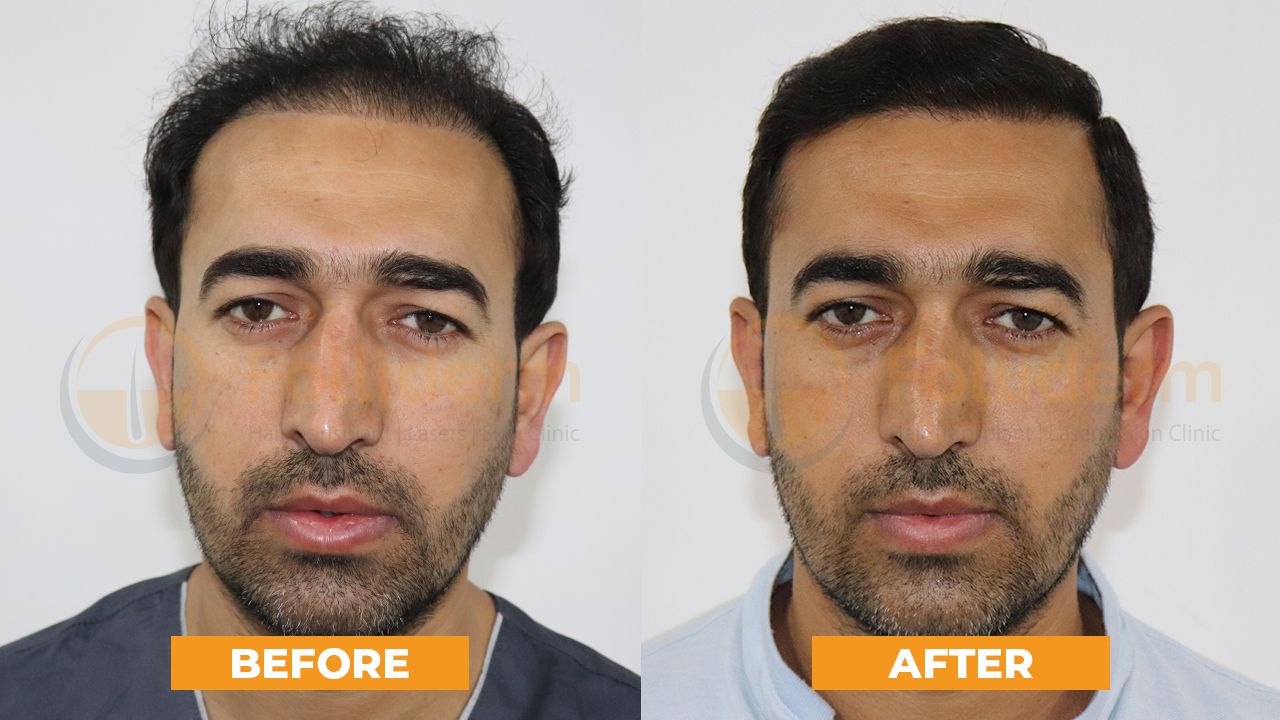
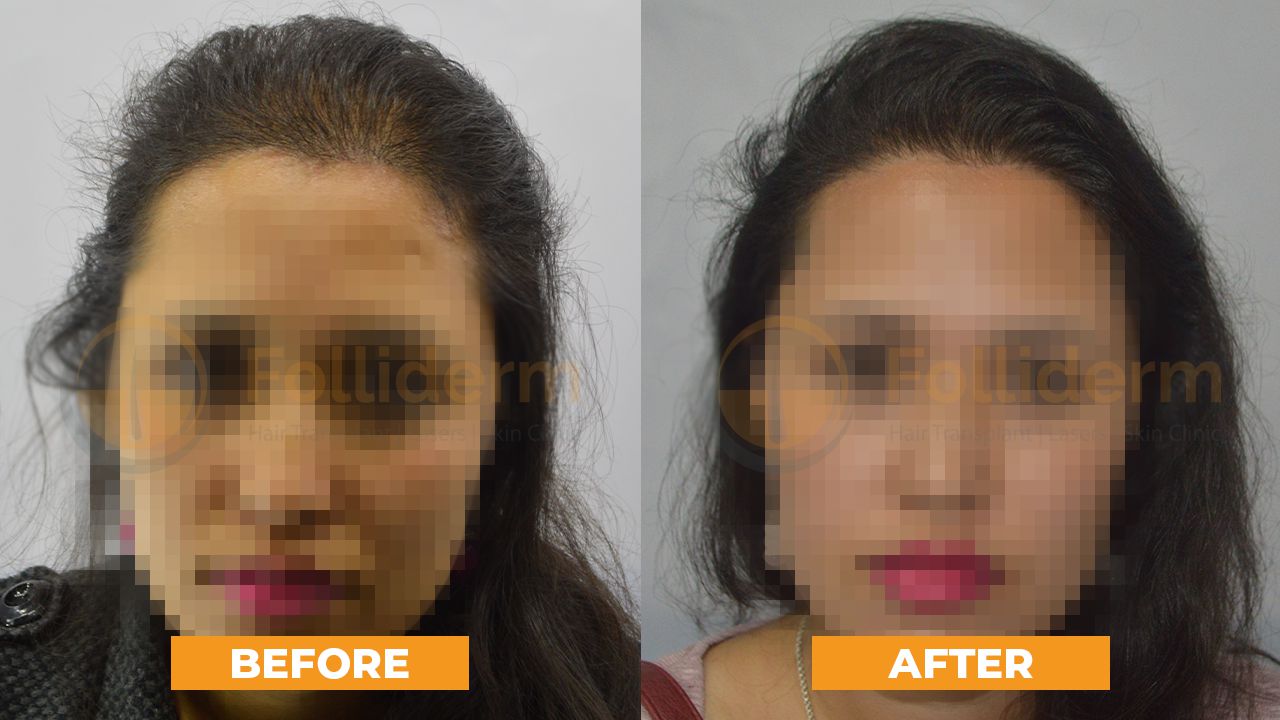
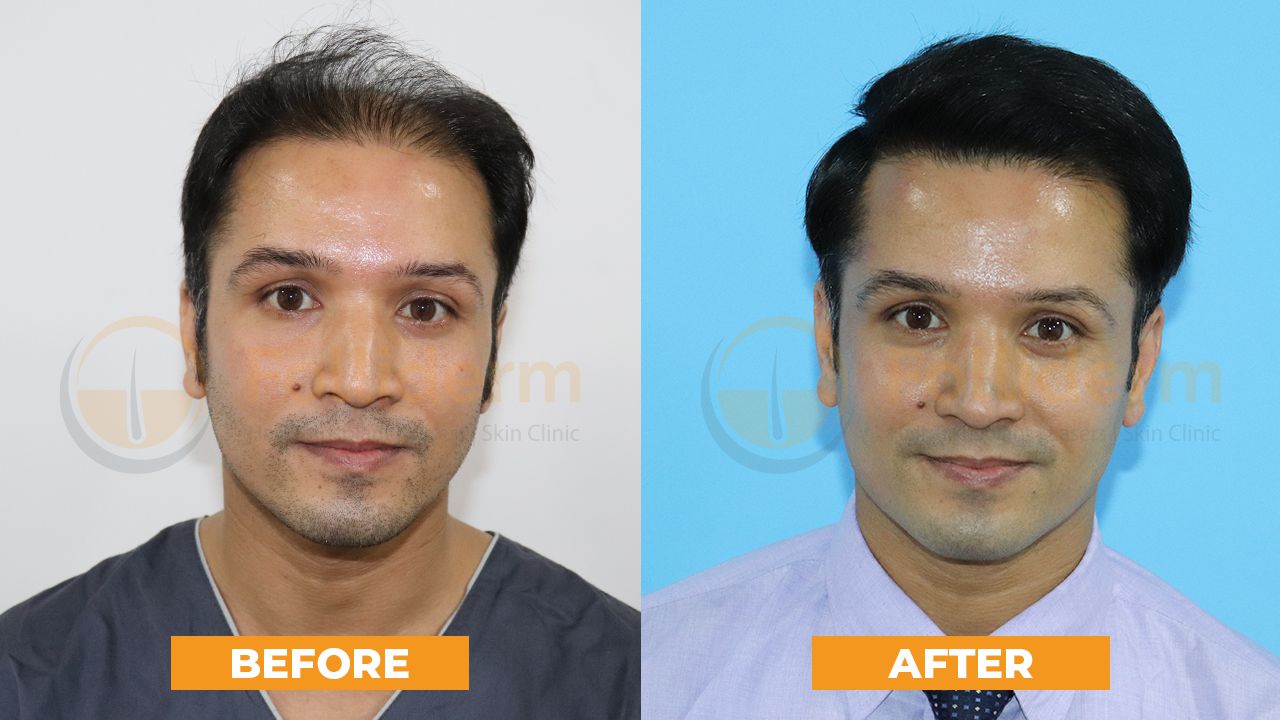
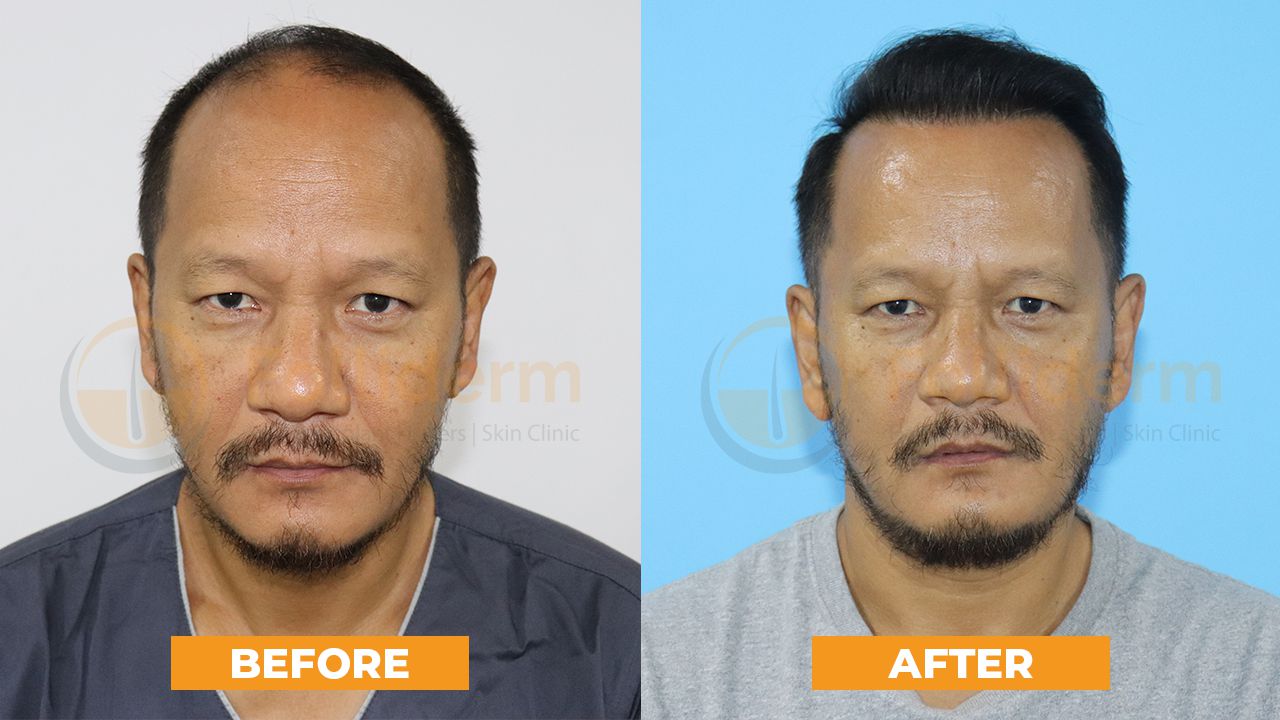
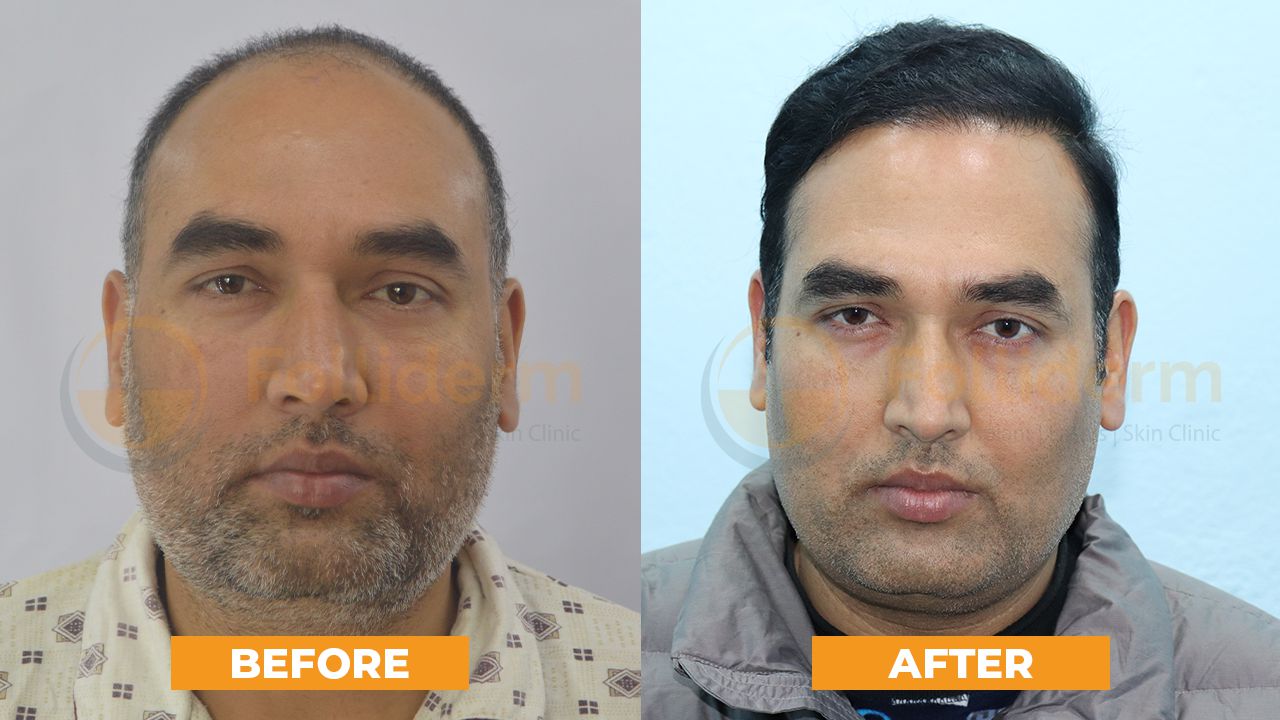
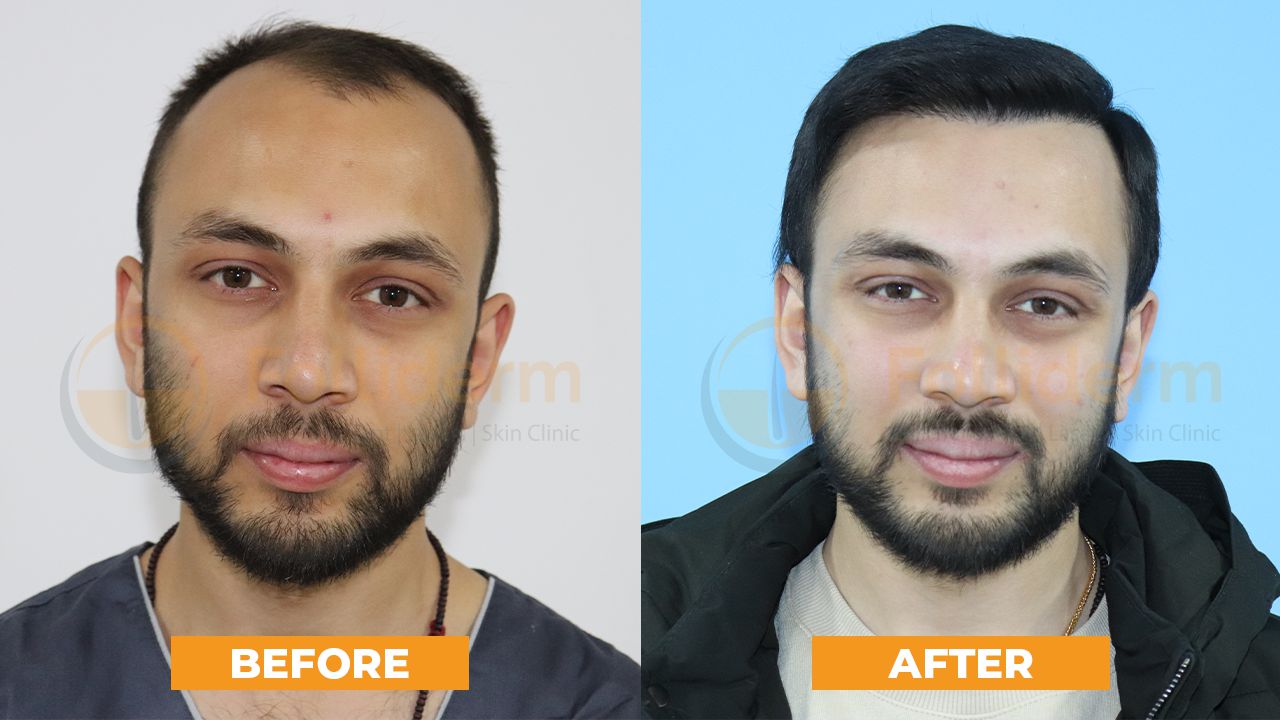
_compressed.jpg)